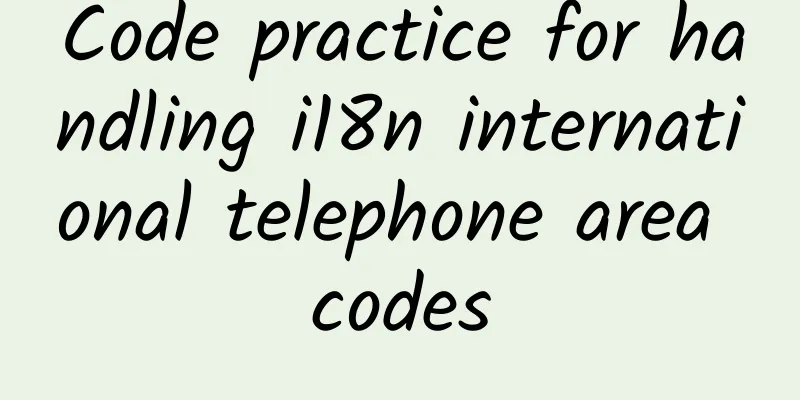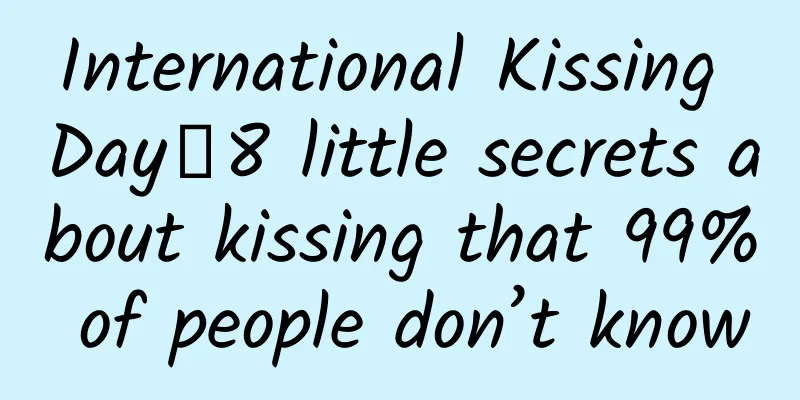Code practice for handling i18n international telephone area codes

PrefaceLast week, I was busy with the internationalization (i18n) of the product. One of the important aspects is the internationalization of phone numbers (we use phone numbers as the main account). A very important part of the phone number is the area code. The above picture is the login interface of our product. In addition to the regular phone number, there is also an area code in front of it, which represents the country and region the phone number belongs to. For the concept of area codes, please refer to Wikipedia. Seeing this, some people may wonder what's so difficult about this? Isn't it just displaying it in a list? There are several problems with this.
So we will do this work locally, but iOS has already done part of the work for us. We can get the localized name of a country or in the current region based on the country code. //Get the current locale Let's do a simple test NSArray *countryArray = [NSLocale ISOCountryCodes]; result zh_CN AD Andorra Now that we have introduced some of the work that iOS does for us, we have to do the other part ourselves. We need a list of regions->area codes, but this is also simple. I found a lot of them online. The file content is as follows (diallingcode.json) [ Maintaining such a table is very simple. We can store it locally or on the server (the "name" field is actually not necessary, it's just for appearance) ResearchLet's put the code aside for now and see how other products do it This is WeChat WeChat still has a lot of problems
This is Twitter Twitter is still weird in Chinese, but it didn’t make WeChat’s second mistake What about Facebook? Their engineers are smart (lazy) and they don’t support indexing at all Next we will solve these problems CodeFirst, create a Modal to display country-related information. @interface MMCountry : NSObject Then we need to read the area code from the configuration file and create an index using the area code as the key NSData *data = [NSData dataWithContentsOfFile:[[NSBundle mainBundle] pathForResource:@"diallingcode" ofType:@"json"]]; Then get the local dialect names of these countries NSLocale *locale = [NSLocale currentLocale]; It should be noted here that the Latin culture of letters solves the second problem of WeChat, so that non-basic Latin letters can also be sorted according to basic Latin letters. The function is as follows - (NSString*)latinize:(NSString*)str There are two steps here
Let's test whether these two steps will result in the same effect as before. NSArray *countryArray = [NSLocale ISOCountryCodes]; result zh_CN AD Andorra | an dao er You can see that the system will convert different expressions of the same country into different Latin letters according to the characteristics of different countries and languages. Next, we classify the acquired data according to 'A'-'Z' NSMutableDictionary *dicSort = [@{} mutableCopy];*** Rearrange the order of the data under each category for ( NSString *key in dicSort.allKeys ) In this way, dicSort is the result set we finally get
Let’s take a look at the final result Is it better than WeChat? discussAlthough the code is written, the problem has not been solved. A key question is why do we need to sort by 'A'-'Z'? For example, Twitter in Japanese and Korean environments is like this In fact, the best solution is to index according to the language characteristics of different countries (PS: seeing the poor results of Twitter in the Chinese environment, I am not sure whether its results in Japanese and Korean are correct (¯﹃¯) summaryThe demo in this article can be found here As mentioned in the discussion, the solution discussed in this article is not the final solution. If you need a better experience, you need to study the culture of each country in depth. Therefore, internationalization is not just a technical issue, but also a social project~~~~ |
<<: How I Doubled My Pickup Rates as a Coder
>>: How should tool apps operate?
Recommend
Social media operation: How to use social media to increase followers accurately?
Community economy has become a trend. Whoever has...
Protein factories: Using the power of evolution to defeat the enemy
Evolution has played a vital role in the billions...
The recurrent laryngeal nerve that “takes a detour”, is this irrefutable evidence from fish to humans?
Many friends have heard that thyroid surgery can ...
Do pregnant mules die? Why can't mules give birth? The culprit is...
Expert of this article: Zhao Xumao, Young Researc...
How do those articles with over 100,000 views come about? Hot articles all follow these 6 principles
How to understand super hit products? For example...
12 Best-selling Laundry Detergents Review: Here Comes the Nemesis of Oil, Milk, Blood and Sweat Stains
In order to help you choose the best laundry dete...
Exploiting Bugs to Hide iOS7.1 Native Apps
Although iOS 7.1 has many native applications with...
A guy got diabetes after drinking sugar-free drinks as water... He thought sugar-free means healthy, but he was really wrong!
There was a report not long ago that a young man ...
How to plan a complete and efficient event? (Four)
This article mainly discusses how to do a complet...
They thought they understood the market, but it turned out that they could hardly sell 4,000 units a month. iCAR 03 is another product that Chery made on a whim.
There are more and more square box models. Mainst...
Artemisinin, an anti-malarial drug
Since ancient times, humans have been waging a lo...
After studying 10 big Douyin accounts, I found 8 Douyin promotion routines
Brother Xian has been feeling rather depressed la...
Recommended flower-viewing routes along the Central Axis, including flower-viewing guides for 111 Beijing parks!
The Qingming Festival holiday is coming soon. Hav...
An iOS super app with billions of users, with 10 years of code changes, have you noticed?
By Dustin Shahidehpour Planning | Yan Zheng Faceb...
Jose Data Advanced Class 11
Resources for Jose Data Advanced Class 11: Course...





![[Case] How does an e-commerce app develop an operation and promotion strategy from scratch?](/upload/images/67cc3caf0533f.webp)



